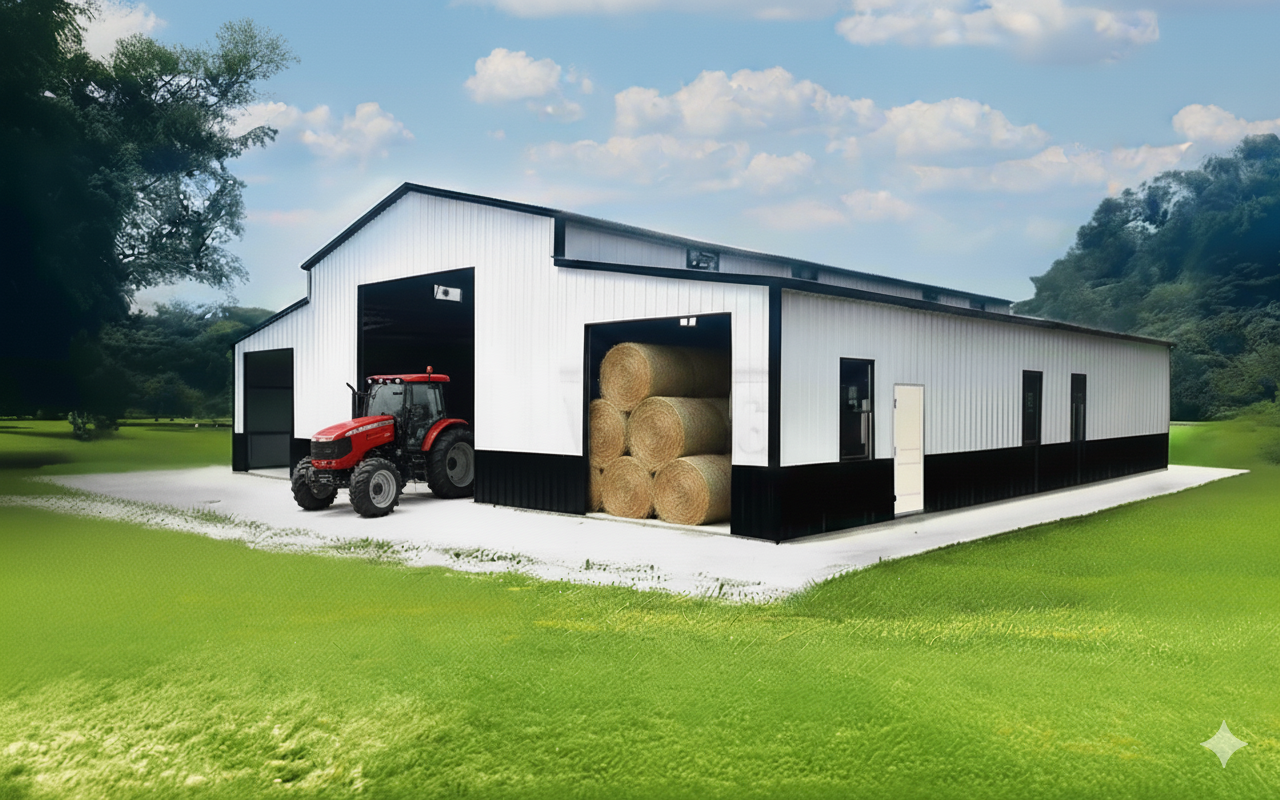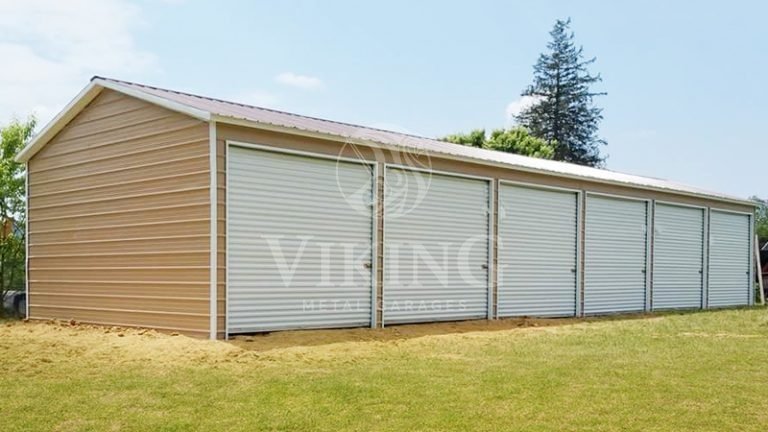Hay keeps livestock healthy, strong, and productive all year long. But when you store it the wrong way, you can quickly turn that golden feed into waste. Dampness, mould, or even a small leak in your barn can ruin months of hard work. And, no one wants it to happen to them and their agribusiness. Whether you are a seasoned farmer or just starting out, a few simple steps to store hay correctly can make all the difference.
Scroll down and look at these solutions, so you don’t have to struggle like other ranchers and farmers.
Why Storing Hay the Right Way Is Crucial
Storing hay properly keeps it dry, safe, and full of nutrients. When hay absorbs moisture, it can grow mould, lose its feeding value, or even catch fire from built-up heat. Wet or mouldy hay can make animals sick and create unpleasant odors in the storage area. Proper storage also reduces waste, saving you money in the long run. By keeping hay off the ground, protecting it from rain, and ensuring good airflow, you can make sure every bale stays fresh and usable for months. It keeps both your animals and your farm running smoothly.
11 Expert Tips to Store Hay the Right Way
Expert tips don’t waste time because they are tried and tested. Often, businesses miss out on them because no one tells them to use them. Here is the list of tips to save your investment and time in the agribusiness sector.
Choose the Right Location
Pick a high, well-drained spot. Water running toward the stacks ruins hay fast. So, avoid low spots, gullies, and places where water pools. A gentle slope is better. Sunlight helps dry the ground, but avoid very exposed areas where the wind will blow loose hay away. Moreover, keep hay away from trees that drip sap or drop branches. Locate hay near animals, but not too close to the hay barn building that would catch fire if the hay smoulders.
Use a Proper Building or Shelter
A good building protects hay from rain and snow. Many farmers use a steel hay barn because metal sheds shed water and are low maintenance. Whether you choose a metal hay barn or a wood structure, make sure the roof does not leak. Walls can be solid or partially open, but the roof must keep water off the stack. So, if you use a metal building, check that the seams and fasteners do not leak.
Keep Hay Off the Ground
Never ever keep hay on the ground where water can reach easily. Always keep hay off the ground. Place pallets, treated timbers, or a raised concrete or gravel pad under the stack. A small gap under the bottom layer allows air to circulate properly. This slows the movement of moisture from the ground into the bales. If you stack directly on soil, the lower bales pick up moisture and start to rot.
Stack Smart for Airflow
The stacking method affects airflow and heat. Do not pile bales randomly. Use rows with small gaps for air. Leave a 2-3 foot space between the stack and the sidewalls of the building. That space allows air to move and keeps condensation off the bales. Moreover, place the stack bales perpendicular to the direction of prevailing winds when stored outdoors under a lean-to or open-sided shelter. But for round bales, don’t follow this technique; instead, stack them in a pyramid with the round side out so water runs off.
Mind Bale Orientation and Packing
Square bales lie flat and stack neatly. Place them with the long side as a stable base. For round bales, store them on their flat ends if possible. This reduces rolling and keeps the bale shape. Avoid stacking round bales with the round sides touching; this can trap water. If you store round bales outside, consider wrapping or stringing them tightly and stacking them on edge in rows to shed water.
Manage Moisture and Drying
Moisture is the biggest enemy of hay and feeds. Bales should be dry before storage. For large round bales, moisture below 15% is safe. For small square bales, aim for 12–14%. Use a hay moisture tester to check. If hay is too wet when baled, it can heat and spoil later. Let freshly baled hay cure longer in the field if possible. If you must store damp hay, ventilate heavily and monitor temperature daily.
Watch for Heat and Spontaneous Combustion
Bales that are too wet can ferment and heat. This heat can cause spontaneous combustion. So, always check the internal temperatures of stacks with a long thermometer probe. If the internal temperature rises above 120°F (50°C), increase ventilation and move outer bales. At 150°F+, you face real fire risk; contact fire services and handle carefully. Additionally, never store large amounts of wet hay in enclosed spaces.
Control Pests and Wildlife
Rodents, birds, and insects damage hay and spread mould quickly. So, to deal with these problems, use rodent-resistant techniques. Here are some tips to handle them effectively.
- Store hay in sealed buildings with tight doors.
- Place metal flashing or wire mesh around the base to block gnawing.
- Keep feed and trash away to reduce attraction.
- Use covered bins or sealed storage for loose hay or cubes.
Moreover, do not forget to regularly check for droppings, nests, and insect damage. You can use a steel barn building to stop rodents and pests in the first place. In most cases, these structures are galvanized and immune to rodents.
Prevent Mildew and Mould
As you know already, they are the enemy of hay; handle these issues without any mistakes. Mould thrives where moisture and warmth meet. This is why you should ensure good ventilation, as it helps prevent moisture development. Stack with gaps to allow air to move smoothly. If mould is found, do not feed it to animals. Remove mouldy bales and discard safely. Use fungicidal treatments only when approved and advised by an animal nutritionist or extension agent.
Flooring and drainage
A firm, dry floor is essential. Gravel pads under the building help drainage. Concrete floors are durable but can hold moisture against the bottom bales if not sloped or separated by pallets. A slight floor slope and good perimeter drainage keep water from pooling. Moreover, gutters and downspouts should direct roof water away from the storage area.
Protect Bales from Rain and Sun
Even if you keep hay inside a cover, rain can still wet it. This is why you need to use tarps as a short-term shield. For outdoor stacks, place bales on pallets, cover the top with a breathable tarp, leaving the sides open for air circulation. Avoid plastic sheeting that seals moisture in. For long-term outdoor storage, consider investing in a metal hay barn or roofed shelter.
When to Consider Covered Storage vs. Outside Stacks
Can covered storage be perfect for hay all the time? The answer is no. You need to switch hay storage according to the season, climate conditions, and your livestock’s needs. Covered storage costs more but reduces spoilage and feed loss. If you have limited land, heavy rain, hail, or snow, a covered building pays off quickly. For short-term or limited budgets, outdoor stacks on pallets with proper cover can work. For long-term, large-scale operations, a good roofed structure saves money in the long run.
Top Seasonal Tips
The hay storage process is not the same for all seasons; it varies. You have to change the storage technique as seasons change. Here is what you need to focus on when the season changes.
- Wet Season: Increase checks for mould and heat. Keep ventilation high.
- Cold Season: Monitor internal temps to avoid freezing and condensation.
- Hot Season: Watch for overheating and increased insect activity.
- Spring: Use older bales first and inspect for winter damage.
Final Words
Good hay storage protects animal health and farm income. Keep hay dry, off the ground, and well-ventilated. Use pallets or a raised floor, stack for airflow, and monitor temperature and moisture. Begin with the best move: choose the right building for your farm size and budget. Many find a metal building to be cost-effective and durable. Moreover, with regular checks, pest control, and smart rotation, you can keep hay nutrient-rich and safe all year.
So, storing hay the right way is practical and achievable. Follow these tips and make small improvements over time. Your animals and your wallet will thank you.












Leave a Reply